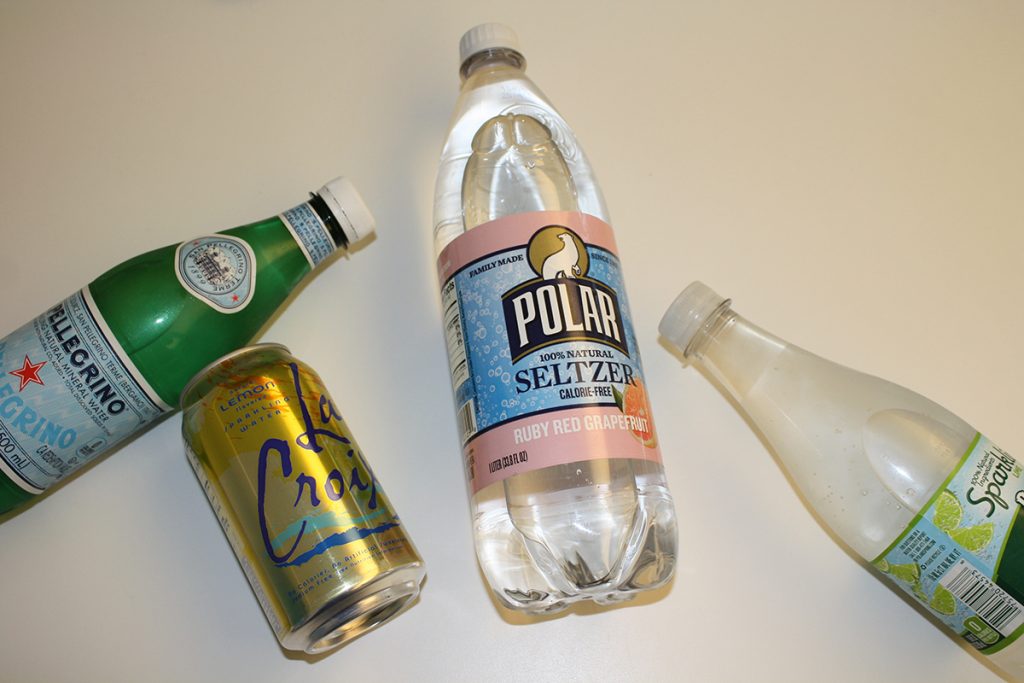“Our lemon seltzer literally has three ingredients: lemon essence, water, and bubbles,” explains Lisbet Crowley, brand activation manager at Polar Seltzer. That’s it—three ingredients. So why is everybody obsessed with the stuff?
It’s not just Polar, and it’s not just lemon. While the Worcester giant has arguably made New England the capital of seltzer consumption—it’s got one of the biggest cult followings in the business, and expats have cases of the stuff shipped cross-country—seltzer is thriving across flavors, brands, and regions. According to Nielsen research, sales rose by 21.6 percent just in 2015.
Those figures don’t lie, says Gregory Stoller, a professor at Boston University’s Questrom School of Business. “People are trying to make healthier choices, including limiting, reducing, or eliminating soda and sugary drinks from their diets,” he explains. “Seltzer has penetrated alcoholic sales, too, providing another revenue stream, further capitalizing on seltzer’s popularity.”
Here in New England, Polar isn’t the only company driving sales. Poland Spring comes from Maine, SpikedSeltzer is in Connecticut, and Adirondack has a plant in Worcester. There’s also the relative newcomer on the block: Spindrift, a Waltham-based company that uses real fruits and vegetables in its products.
“People are looking for the mouth sensation that comes with bubbles that they remember from being a kid and growing up around soda, but they don’t want any of the garbage that also comes along with it,” says Spindrift founder and CEO Bill Creelman. “It’s water with personality.”
But seltzer isn’t just a healthy choice; it’s a bonafide trend. As of this writing, 78,934 Instagram posts have been tagged with #LaCroix, and Crowley says “people carry around [Polar’s] one liter, and it’s kind of a lifestyle statement.”
Indeed, America’s relatively newfound interest in sparkling water may have less to do with bubbly beverages than it does with a shifting relationship with food, and the emergence of an era when Sweetgreen is cooler than McDonald’s. With soda sales falling to a 30-year low and healthy everything in vogue, seltzer may be a proxy for a new emphasis on label reading and shopping smart, on clean eating and nutritious living. As the public grows more concerned with what it’s consuming, seltzer is something of a unicorn: a fun, flavorful product that’s free of just about everything bad.
“The trend is the shift of people starting to read labels,” Crowley says, though she notes that Polar has been churning out seltzer for more than a century. “People are moving to products they trust, and we’ve been here so long building that trust.”
It wasn’t always an easy sell for everybody, though. When Creelman started his company six years ago, he says customers weren’t “really ready for a sparkling water with real ingredients,” leading Spindrift to push a lightly sweetened beverage instead. Only recently, he says, has demand grown for the more austere flavors the brand now puts out.
“Understanding has grown a lot. People are playing much closer to attention to what’s on the back of the bottle or the can,” he says. “They like the transparency that comes along with the sparkling water category.”
Dietitian Lainey Younkin agrees, noting that seltzer is clear proof of consumers making healthier choices. “We know that the purchase and consumption of soda has actually decreased in the last couple years, and the purchase of bottled water has gone up,” she says. “I think it’s correlated [with people wanting to be healthier].”
Bubbly water is an easy example—soda sales go down, water sales go up, ergo American preferences must be changing—but Younkin says the shift is there, perhaps more subtly, across the board. For proof, she points to the rise of healthy fast casual chains, more nutritious dishes in restaurants, and the public’s willingness to embrace foods such as quinoa.
“I like to think that people are eating more fruits and vegetables than we used to,” she adds, “which makes me happy.”
Creelman, of Spindrift, says those new habits aren’t going anywhere, either. As people understand more about nutrition, he says, society will only continue further down its path to food righteousness—and full-blown seltzer addiction.
“I don’t think people are going to go back to drinking 150-calorie Cokes again. The diet products, the fake sweetener, I also don’t think those are going to come roaring back as a trend,” he says. “Really, where that leaves you is this unsweetened world.”
Ducharme, Jamie. (2016, September 2) America’s Seltzer Obsession Shows No Signs of Fizzling: It may be proof that people are shifting to healthier habits across the board. Boston Magazine Retrieved from http://www.bostonmagazine.com/health/blog/2016/09/02/seltzer-obsession/

